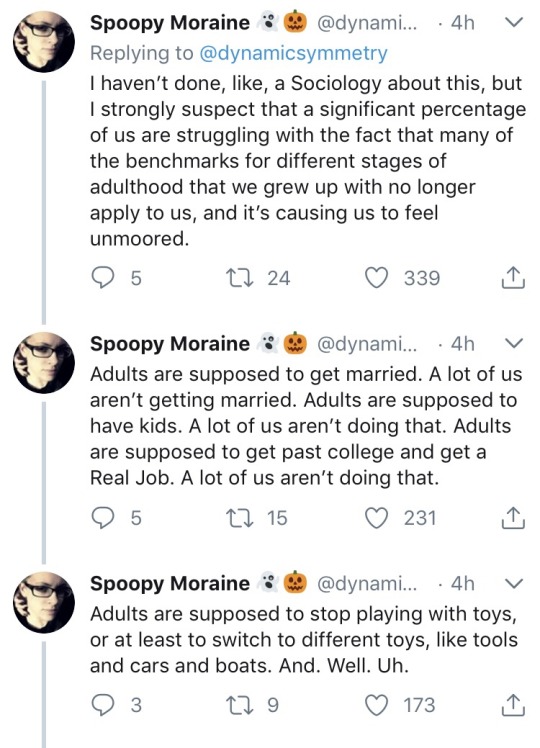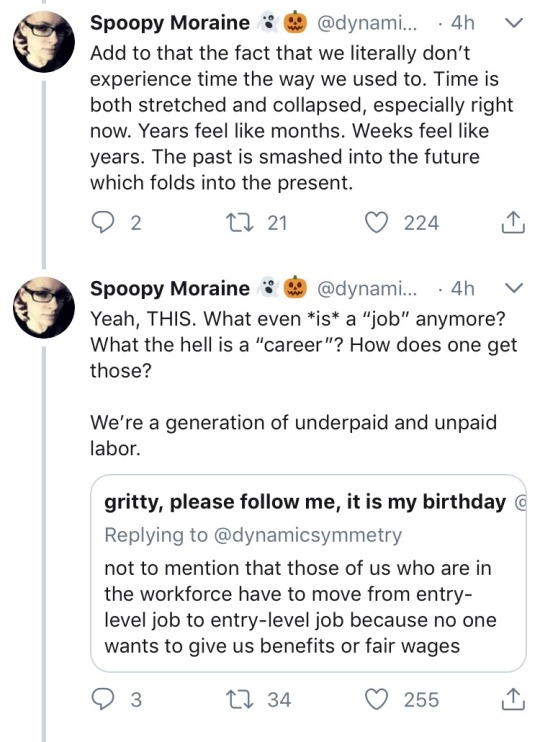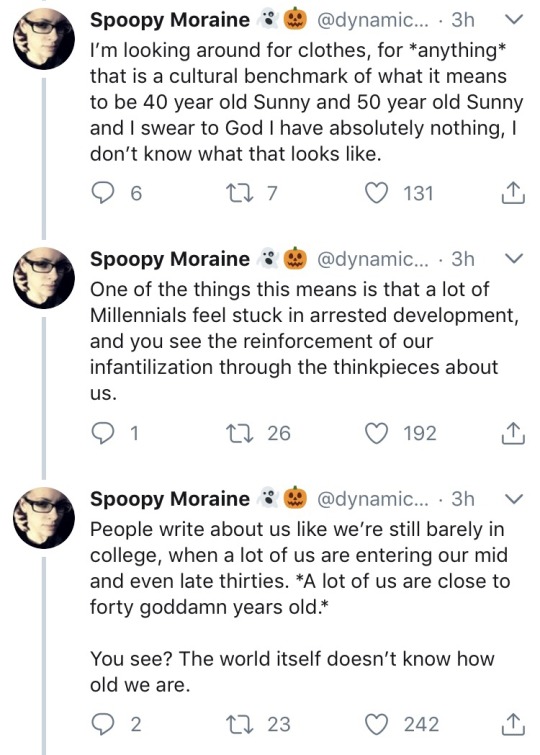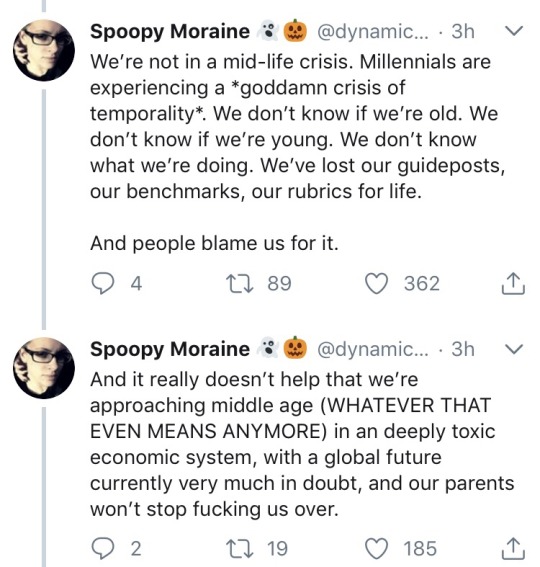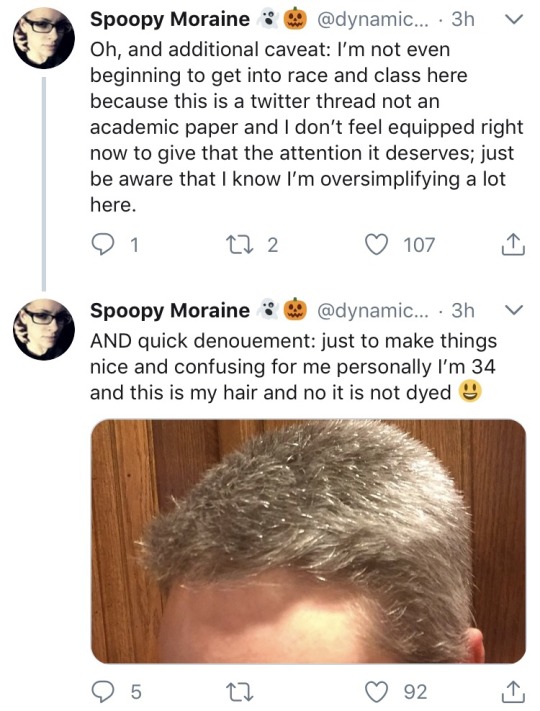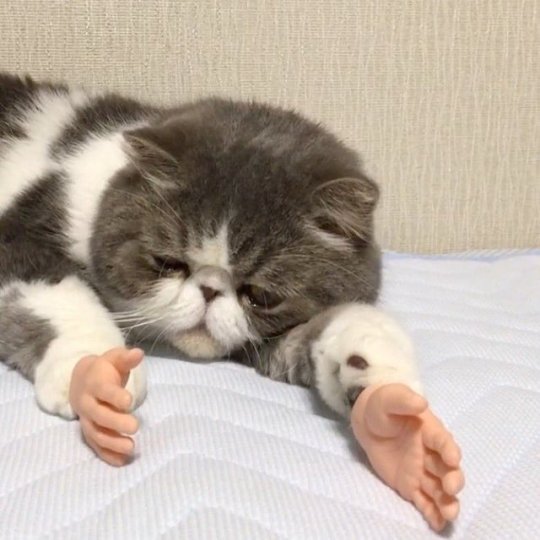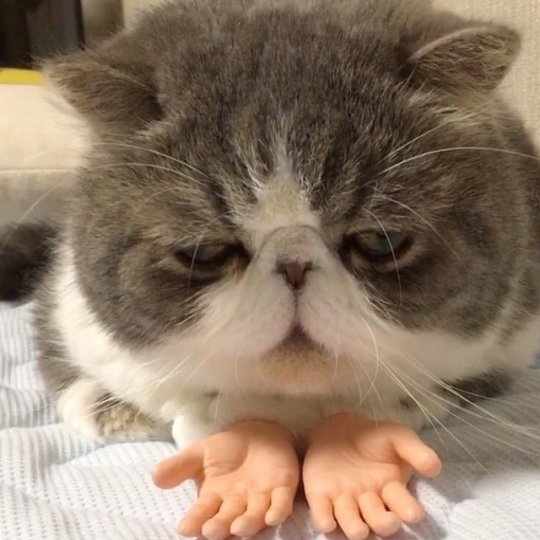Don't wanna be here? Send us removal request.
Text

Chaos in my head
Doesn't seem that bad
11 notes
·
View notes
Photo



Home Is Where The Art Is…
Muse x Photographer @cassandraalice_ I.G
2K notes
·
View notes
Video
Spilled all the dam tea and its hot

Brenda had TIME today
122K notes
·
View notes
Video
121K notes
·
View notes
Text
We all need this
This is a big, giant list of Youtube tutorials that will teach you all the basic life skills you need to know in order to be a functional adult. There are a lot of important skills that aren’t included in this list, but this should be enough of a basic guide to get you started and prevent you from making a total mess of yourself. Happy adulting! Household Skills:
How to unclog a toilet without a plunger
How to fix a blown fuse
How to fix a leaky faucet
How to clean soap scum from your tub and shower
How to escape from a house fire
How to make a budget and stick to it
How to sharpen a knife
How to clean a self-cleaning oven
How to clean red wine stains from carpet
How to clean blood stains from fabric
How to clean grease stains from fabric
How to do a load of laundry
How to iron your clothes
How to test your smoke detectors
Cooking Skills:
How to tell if produce is ripe
How to know if food is expired
How to properly sanitize a kitchen
How to cook an egg
How to make rice
How to make pasta
How to put out a kitchen grease fire safely
How to use a gas stove
How to use a convection oven
How to cook meat safely
How to use a stand mixer
How to use kitchen knives properly
How to make mashed potatoes
How to make grilled cheese sandwiches
Health Skills:
How to stop bleeding
How to treat a burn
How to do CPR (on an adult)
How to do CPR (on a child)
How to do CPR (on a baby)
How to help someone who is choking
How to save yourself if you are choking alone
How to read a nutrition label
How to treat frostbite
How to recognize when someone is having a stroke
How to maintain a healthy sleep schedule
Mental Health Skills:
How to calm down during a panic attack
How to help someone who is suicidal
How to meditate
How to stop self-harming
How to recognize problem drinking
How to choose a therapist
How to deal with disappointment
How to cope with grief
How to raise your self-esteem
Relationship and Social Skills:
How to apologize
How to cope with a breakup
How to accept criticism
How to deal with bullying
How to argue in a healthy way
How to ask someone out
How to break up with someone
How to recognize an abusive relationship
How to rekindle a damaged friendship
How to speak in public
Job Hunting Skills:
How to tie a tie
How to write a resume
How to write a cover letter
How to dress for a job interview (for women/femmes)
How to dress for a job interview (for men/masculines)
How to properly shake hands
How to nail a job interview
Other Skills:
How to sew on a button
How to hammer a nail
How to change your oil
How to put gas in your car
How to jump-start a car
How to pick a good password
How to back up your files
How to write a cheque
200K notes
·
View notes
Photo

QUEEN NZINGA: THE UNCONQUERABLE
“Greatness was born out of the savage oppression of the Africans and out of that oppression it grew like a giant. Just why the Portuguese drew so much blood with the lash from already chained and helpless slaves is beyond all human understanding since, if for no other reason, the victims were “articles of commerce” and the source of the very riches slavers sought. Besides, over half of the captured Blacks died before reaching their destination. Self-interest, then, should have stayed the murderous hands of the slavers. Nothing did, and that fact was one of the reasons that Queen Nzinga said that the real savages in Africa were the whites. They created the conditions that brought her to the fore. The Portuguese were so aggressive in their program for dividing the blacks and keeping them fighting among themselves that they overshot the mark, simply went too far. The system of spreading out over the country into the provinces and allying themselves with the various chiefs has been mentioned more than once. But after 1608 the commander-in-chief of the Portuguese army tightened the noose. This was Bento Cardoso. Under his plan Angola was to be further depopulated by a massive onslaught for slaves through a closely coordinated system in which every chief in the land would be “owned” By a Portuguese and directly responsible to him for a stated quota of slaves. This would bypass the Angolan King (Of Ndongo) to whom the provincial chiefs paid their taxes in slaves….Chiefs failing to secure the required number of slaves were themselves enslaved. Over a hundred chiefs and other notables were sold into slavery in a single year and another hundred murdered by the Portuguese.The Angolan King, who had been cooperating with the slaves traders, now saw himself being ruined on all fronts, losing his people and his profits. He therefore began to resist the Portuguese
It Paid off. Both the portugese and their Jaga allies were checked, and the war dragged on year after year…. Eventually the pope intervened, insisting that the wholesale slaughter be ended and peace be pursued. The peace conference was held at Luanda (1622). The Black delegation was headed by the country’s ablest and most uncompromising diplomat, Ann Nzinga, not yet queen, but sister of the king - the woman power behind a weak king, and one of the most responsible for inspiring the people to continue war of resistance when every hope was gone, unless she herself had become their last hope. But even before the peace conference began, and at the risk of wrecking it, the governor’s Caucasian arrogance could not be restrained. He had decided on a studied insult at the outset by providing chairs in the conference room only for himself and his councilors, with the idea of forcing the black princess to stand humbly before his noble presence. He remained seated of course, staring haughtily as she entered the room. She took in the situation at a glance with a contemptuous smile, while her attendants moved with a swiftness that seemed to suggest that they had anticipated this stupid behavior by the Portuguese. They quickly rolled out the beautifully designed royal carpet they had brought before Nzinga, after which one of them went down on all fours and expertly formed himself into a “royal throne” upon which the princess sat easily without being a strain on her devoted follower.

Yet she rose at regular intervals, knowing that other attendants were vying for the honor of thus giving to these whites still another defeat. I gather from the different ways this incident is reported that the Western mind is unable to grasp its real meaning. Some historians saw it as a cruel and in-human use of slaves, ignoring the fact that Nzinga’s chief claim to fame was that she was the greatest abolitionist of slavery, that she herself had no slaves and, indeed, had not the slightest need for any. One reason might be be that she was so much loved and even blindly followed by her people that it was believed that all would die, to the last man and woman, following her leadership. Such were the men, not slaves, who gladly formed human couch before the astonished Portuguese for their leader.
She faced the Portuguese governor and spoke as a ruler of the land, and not as a subject of the king of Portugal. She did not recognize the man in the big chair as governor because she did recognize the existence of a Portuguese “colony of Angola.” She only saw before her what her people had seen approaching their shores over a hundred years before - pompous white devils bent on the destruction of the non-white world.
Nzinga became queen in 1623, and went into action at once. Her first major move was to send an ultimatum to the Portuguese authorities demanding the immediate execution of the terms of the treaty, otherwise war would be declared. Nzinga’s greatest act however, probably the one that makes her one of the greatest women in history, was in 1624 when she declared all territory in Angola over which she had control as free country, all slaves reaching it from whatever quarter were forever free, She went further. Since it was clear to her that white power in Africa rested squarely on the use of black troops against black people, she understood the first and only carefully organized effort to undermine and destroy the effective employment and use of black soldiers by whites.The first and only Black leader in history who was ever known to undertake such a task. She had carefully selected groups of her own soldiers to infiltrate the Portuguese black armies, first separating and spreading out individually into Portuguese held territory and allowing themselves to be “induced” by Portuguese recruiting agents to join their forces.
The quiet effective work of Nzinga’s agents among the black troops of Portugal was one of the most glorious, yet unsung, pages in African history. For whole companies rebelled and deserted to the colors of the black queen, taking with them the much needed guns and ammunition which she had been unable to secure except by swiftly moving surprise attacks on enemy units. The Queen’s armies were further strengthen by the runaway slaves who streamed into the only certain haven for the free on the whole continent of Africa. To the Portuguese, Queen Nzinga had passed the last word in unheard of audacity when she was able to influence scores of vassal chiefs to rebel against them and join the cause of their own race.This was too much.This woman had to be destroyed. It had come to that.

The Portuguese captured her stronghold in the Cuanza river in July 1626…With Nzinga’s flight from Angola it appeared that the black menace was over and victory complete. Aidi Kilujani was crowned King Phillip I of Ndongo. But the solidarity of the Blacks remained unbroken, however and their loyalty to Nzinga remained steadfast. She was “just away for a little while,”and would soon return. Any child in the most distant bush could tell you that their Queen was “just away on business.” So who was this Phillip? His name said he was a Portuguese, so he couldn’t be king of Ndongo. All Angolan kings and queens were so African that they couldn’t be tricked out of their own African names. The Queen herself had dropped “Ann” from her name when she discovered that baptizing a Black into Christianity meant surrendering his soul and body not to any Christ, but to the white man. And oral tradition further has it that the people not only rejected “Phillip I,” but made fun of the very idea that he considered himself to be king. Their blind faith in their Queen and the certainty of her return, according to the same oral record, was not really so blind. Those who understood the coded drum messages spread the news that all guerilla attacks which occurred throughout the land were attacks which were personally directed by the queen and that, in fact, she was raising a new army of liberation. Her loyal chiefs and people in Ndongo were to stand by, ready.
In November, 1627, She crossed the borders back into her country at the head of a strong army, made stronger & stronger as her loyal chiefs and wildly cheering people, including her fanatically devoted freed men, flocked to her standard as she swept forward to recapture the Cuanza stronghold held by Phillip I and put him to flight. The Portuguese continued to be amazed at this display of black unity and under a woman’s leadership at that. Black unity was now seen clearly as Black Power, and that meant an unconquerable people. The Portuguese were resolved to break that unity and the power that developed from it. The revolt against them had become general as Nzinga’s victorious forces advanced. The Portuguese retreated to their own strongholds on the coast, giving the “Dutch threat” as an excuse and not the threat of being annihilated by the Queen’s forces.

As there was in fact no immanent Dutch threat, the Portuguese regrouped and strengthened their forces for an all-out war to destroy Nzinga and this time, not to cease fighting until this was done. They began by giving orders and offering a big reward for her capture, dead or alive. Their slave troops, still the backbone of the Portuguese armed forces, were given the special inducements of land and freedom for her capture Realizing that such an all-out attempt to capture her meant that countless thousand of her people would die in her defense, she outwitted the Portuguese again by slipping out of the country, instructing her lieutenants to spread the word everywhere that she had fled the country and, mistakenly entering the territory of an enemy, had been killed. There was general weeping and mourning throughout Ndong, real weeping and mourning, because the masses believed the story to be true. So did the Portuguese. The only reason for the war having been removed by providence, the Bishop could celebrate a special mass in celebration of this special blessing, and the colony of Angola could at at last be organized.
Then in 1629 the Portuguese stood aghast when Queen Nzinga “burst upon them from the grave ,” sweeping all opposition before her. She brought in her fierce Jaga allies (rivals), apparently wiling to do even this to defeat whites. The Portuguese were completely defeated. She had not only retaken her own country, but had, meanwhile become Queen of Matamba also, having replaced the weak Queen there. Nzinga was now an empress of two countries. She now redoubled her campaign against slavery and the slave trade by making both Ndongo and Matamba havens for all who could escape from the slaver by rebelling otherwise. Chiefs engaged in the traffic in nearby states now stood in fear of her wrath. The Portuguese saw “the writing on the wall.” In order order not to lose every foothold in the area, Lisbon suddenly remembered that it had never carried out the treaty signed with Nzinga in 1622, and declared that Portugal’s wars against her had been unjust! High level embassies were sent to the queen in 1639 in efforts to effect a settlement. Nzinga received them listened to their protestants of eternal friendship, and went ahead with determination in reorganizing both of the kingdoms and undermining colonial rule in areas held by the enemy. That every white man in Africa was an enemy of the Blacks was a matter about which there was no room for debate in her mind.
Even the holy robes of the priests in Angola not only covered their real mission as agents of the empire, but also covered their insatiable lust for the black bodies of their helpless slave girls. She had been forced by the actualities of black-white relations to distrust all whites, along with their tricky treaties.”

“By 1656, tired and weary from four decades of relentless struggles, she signed a treaty that was revised and made acceptable to her. There was seven more years of a busy life for Queen Nzinga - pushing reconstruction, the resettlement of ex-slaves, and undertaking the development of an economy of free men and women that would be able to succeed without the slave trade.
In the heart torn state of national mourning (Queen Nzinga’s death 1663) the Queen’s council permitted two priests to come in and perform the last rites of the Church. Since the Queen had renounced the catholic religion many years before her passing, and had banned missions from her country as centers of subversion, this appearance of priests at the royal bedside may be explained either as a once a Catholic always a Catholic theory, or as an attempt by Catholic Portugal to give the appearance of final victory on all fronts. In this case it would mean that the most unconquerable of foes, recanting and submissive, had been conquered by their religion in the end. And so it is written in the official documents of Portugal, the written record used by almost all historians of Africa, that Nzinga had returned to the church that had baptized her as “Ann”. Yet she was one of the very first Blacks to see that the Portuguese conquests, the slave trade, and the Church were all inseparably one in the same. The long years of warfare had been equally against all three..The unholy trinity. And she had never surrendered. In 1963, three hundred years after her death, her people, now catholic themselves, did not believe she had returned to the church.”
- Chancellor Williams, THE DESTRUCTION OF BLACK CIVILIZATION.
1K notes
·
View notes
Text
Black Authors Rec List
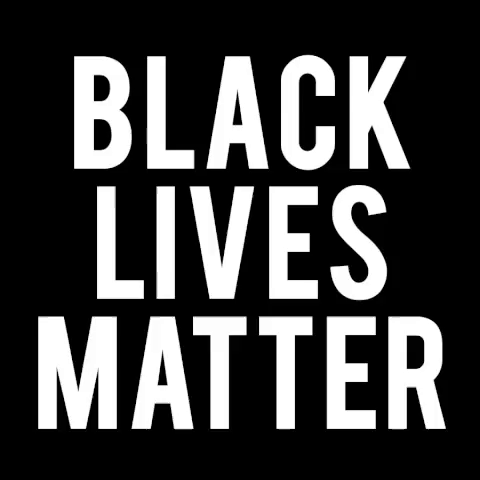
YA Novels
“Children of Blood and Bone” by Tomi Adeyemi
“Dread Nation” by Justina Ireland
“Finding Yvonne” by Brandy Colbert
“Tyler Johnson Was Here” by Jay Coles
“The Hate U Give” Angie Thomas
History
“The New Jim Crow” by Michelle Alexander
“Incidents in the Life of a Slave Girl” by Harriet Jacobs
“Freedom Dreams” by Robin D.G. Kelley
“The Common Wind” by Julius S. Scott
Auto/Biography/Memoir
“The Autobiography of Malcolm X” Malcolm X
“Assata: An Autobiography” Assata Shakur
“Between the World and Me” Ta-Nehisi Coates
“This Will Be My Undoing” by Morgan Jerkins
“Born a Crime” by Trevor Noah
Fantasy/Sci-Fi
“Skin Folk” by Nalo Hopkinson
“Mumbo Jumbo” by Ishmael Reed
“Who Fears Death” by Nnedi Okorafor
“Dark Matter” by Sheree R. Thomas
“The Kishi” by Antoine Bandele
Comics
“Bingo Love” by Terrence Sage
“Rise of the Black Panther” by Ta-Nehisi Coates
“Spider-Man” by Brian Michael Bendis
“Abbott” by Saladin Ahmed
“The American Way” by John Ridley
LGBTQ+
“Zami” by Audre Lorde
“Brother to Brother” by Essex Hemphill
“Under the Udala Trees” by Chinelo Okparanta
“Burnt Men” by Oluwasegun Romeo Oriogun
“The Color Purple” by Alice Walker
Poetry
“Helium” by Rudy Francisco
“Bestiary” by Donika Kelly
“How Much We Must Have Looked Like Stars to Stars” by Alysia Nicole Harris
“The Weary Blues” by Langston Hughes
“The Black Unicorn” by Audre Lorde
Authors
Toni Morrison
Zora Neale Hurston
Ta-Nehisi Coates
Octavia E. Butler
Ralph Ellison
Personal Favorites
“Dear Ijeawele, or A Feminist Manifesto in Fifteen Suggestions” by Chimamanda Ngozi Adiche
“Go Tell it on the Mountain” by James Baldwin
“We Were Eight Years in Power” by Ta-Nehisi Coates
“The Bluest Eye” by Toni Morrison
“Things Fall Apart” by Chinua Achebe
Honorable Mentions by People in the Notes
“The Skin I’m In” by Sharon G. Flake
“Jazz” by Toni Morrison
“A Mercy” by Toni Morrison
“The Warmth of Other Suns” by Isabel Wilkerson
Jesmyn Ward
“All American Boys” by Brendan Kiely and Jason Reynolds
Editor’s Note:
If you want me to add one of your favorites, just message me!
6K notes
·
View notes
Audio
nice legs daisy dukes makes a man go *lemongrab screaming unacceptable*
48K notes
·
View notes
Text
Quick Sheet: Hormones Produced in the endocrine system
Gland
Hormone(s) Produced
Primary Function(s)
Hypothalamus
Regulatory hormones
Control release of hormones from anterior pituitary
Hypothalamus (released from posterior pituitary)
Antidiuretic hormone (ADH)
Stimulates both the kidneys to decrease urine output and thirst center to increase fluid intake when the body is dehydrated; in high doses, ADH is a vasoconstrictor (thus, it is also called vasopressin)
Oxytocin
Contraction of smooth muscle of uterus; ejection of milk; increases feelings of emotional bonding between individuals
Pituitary gland (anterior)
Thyroid-stimulating hormone
Stimulates thyroid gland to release thyroid hormone
Prolactin (PRL)
Regulates mammary gland growth and breast milk production in females; may increase secretion of testosterone in males
Follicle-stimulating hormone (FSH)
Controls development of both oocyte and ovarian follicle (spherical structure that houses an oocyte) within ovaries; controls development of sperm within testes
Luteinizing hormone (LH)
Induces ovulation of secondary oocyte from the ovarian follicle
Controls testosterone synthesis within testes
Adrenocorticotropic hormone (ACTH)
Stimulates adrenal cortex to release corticosteroids (e.g., cortisol)
Growth hormone (GH)
Release of insulin-like growth factors (IGFs) from liver; GH and IGFs function synergistically to induce growth
Pineal gland
Melatonin
Helps regulate the body’s circadian rhythms (biological clock); functions in sexual maturation
Thyroid gland
Thyroid hormones:
T3 (triiodothyronine) and
T4 (tetraiodothyronine or thyroxine)
Increase metabolic rate of all cells; increase heat production (calorigenic effect)
Calcitonin
Decreases blood calcium levels; most significant in children
Parathyroid glands
Parathyroid hormone (PTH)
Increases blood calcium levels by stimulating both release of calcium from bone tissue and decrease loss of calcium in urine; causes formation of calcitriol hormone (a hormone that increases calcium absorption from small intestine)
Thymus
Thymosin, thymulin, thymopoietin
Maturation of T-lymphocytes (a type of white blood cell or leukocyte)
Adrenal cortex
Mineralocorticoids (e.g., aldosterone)
Regulate blood Na+ and K+ levels by decreasing the Na+ and increasing the K+ excreted in urine
Glucocorticoids (e.g., cortisol)
Participate in the stress response; increase nutrients (e.g., glucose) that are available in the blood
Gonadocorticoids (e.g., dehydroepiandrosterone [DHEA])
Stimulate maturation and functioning of reproductive system
Adrenal medulla
Epinephrine (EPI) and norepinephrine (NE)
Prolong effects of the sympathetic division of the autonomic nervous system
Pancreas
Insulin
Decreases blood glucose levels
Glucagon
Increases blood glucose levels
Testes (gonads)
Testosterone
Stimulates maturation and function of male reproductive system
Inhibin
Inhibits release of follicle-stimulating hormone (FSH) from anterior pituitary
Ovaries (gonads)
Estrogen and progesterone
Stimulates maturation and function of female reproductive system
Inhibin
Inhibits release of follicle-stimulating hormone (FSH) from anterior pituitary
Heart
Atrial natriuretic peptide (ANP)
Functions primarily to decrease blood pressure by stimulating both the kidneys to increase urine output and the blood vessels to dilate
Kidneys
Erythropoietin (EPO)
Increases production of red blood cells (erythrocytes)
Liver
Angiotensinogen
Converted by enzymes released from the kidney and within the inner lining of blood vessels to angiotensin II; increases blood pressure by causing vasoconstriction and decreasing urine output; stimulates thirst center
Insulin-like growth factors (IGFs)
Functions synergistically with growth hormone to regulate growth
Erythropoietin (EPO)
Increases production of red blood cells (erythrocytes); note that kidneys are the major producers of EPO
Stomach
Gastrin
Facilitates digestion within stomach
Small intestine
Secretin
Regulates digestion within small intestine by helping to maintain normal pH within small intestine
Cholecystokinin (CCK)
Regulates digestion within small intestine by facilitating digestion of nutrients within small intestine
Skin
Vitamin D3
Converted by enzymes of liver and kidney to calcitriol; functions synergistically with PTH and increases calcium absorption from small intestine
Adipose connective tissue
Leptin
Helps regulate food intake
Placenta
Estrogen and progesterone
Stimulates development of fetus; stimulates physical changes within mother associated with pregnancy including those in the uterus and mammary glands
1K notes
·
View notes
Text
Why is reading the Bible so hard? Riddles I don't get em
2 notes
·
View notes
Text
Am I a caddy or a friend? Let's go so & so I have real bags ←_←
1 note
·
View note

